 It was just another record year of profits for Canada’s Big 5 banks. And they couldn’t have done it without mortgages.
It was just another record year of profits for Canada’s Big 5 banks. And they couldn’t have done it without mortgages.
As is customary every quarter, we’ve poured through all the major banks’ earnings reports, presentations and conference calls to pull out the mortgage tidbits.
Below you’ll read comments from CIBC about the broker channel; BMO on its growing mortgage portfolio; National Bank on its decision to decrease its exposure to the broker channel; RBC on its new mortgage origination system and Scotiabank on its openness to acquiring brokerage firms. (Yep, that last point surprised us too.)
If you’re time-pressed, the focal points are highlighted in green.
*********
Bank of Montreal
Q4 net income: $1.088 billion (+1% Y/Y)
Earnings per share: $1.64
Annual net income: $4.2 billion (+1% Y/Y)
- BMO’s total Canadian residential mortgage portfolio stood at $88.6 billion, up from $85.5 billion in Q3. (Source)
- 59% of the bank’s residential mortgage portfolio is insured, unchanged from Q3. (Source)
- Average loan-to-value (LTV) on the uninsured portfolio is 59%, unchanged from Q3. (Source)
- Loss rates for the trailing 4-quarter period were less than 1 basis point. (Source)
- BMO’s condo mortgage portfolio is $12.3 billion, up from $11.8 billion in Q3, with 53% insured (unchanged from Q3). (Source)
- The 90-day delinquency rates improved Y/Y and Q/Q. (Source)
- Asked why the bank’s mortgage related NIM was down, BMO CEO Frank Techar responded: “We do, as you know, have the smallest portfolio of the big 5 banks in Canada, and therefore we’ve got a little room to grow. We also view the mortgage business as attractive. It’s one of those products where we can bring new customers into the company. And we’ve been successful in doing that over the last couple of years; we have had the objective to grow faster than the marketplace as part of our strategy, which I’ve talked about in the past as well, and so I would only say that we have been successful based on our recent performance and we’re hoping to continue to build on that in the future. We have grown as a result of a couple of things: The first one is, we’ve had great products in the marketplace, products that have been attractive to customers looking to purchase homes and we’ve also had great products because they’ve helped us from a retention perspective, our 5-year product is definitely helping at this point in time as fewer people are refinancing. And on top of that, we’ve had strong sales management performance in our proprietary channels, so if you look at our mortgage growth, which over the course of the year, has been in the mid-double digits, our proprietary channel growth has been double digits as well. Growth coming from our branches and from our mortgage specialist sales force. So for all those reasons, I’m happy with the growth in our mortgage business and we’re going to continue to do everything we can to grow as rapidly as we can, recognizing that we’re doing it with our normal, prudent, consistent, conservative underwriting standards as well.” (Source)
- Asked about the bank’s use of third-party channels for mortgage origination, Techar added: “We funded third-party mortgages every year that I’ve been associated with the business. We do it opportunistically based on return and quality criteria and overall, the third-party mortgage book represents a small percentage of our mortgage business.” (Source)
- Further to the NIM, Techar said: “I would say that our mortgage growth, being as strong as it is, is having an impact on margin but I would also just point out that over the last two quarters, our margin is down 4 basis points. I think I guided towards 2 to 4 basis points a quarter. So it’s actually been at the low end of the range. And I’d also point out the fact that our net interest income is up quarter-over-quarter. So we’re still growing our revenue at a time when our NIM is continuing to be under pressure and more so from competitive pressure than the growth in our balance sheet.” (Source)
CIBC
Q4 net income: $836 million (-2% Y/Y)
Earnings per share: $2.05 a share
Annual net income: $3.4 billion (+3% Y/Y)
- CIBC’s residential mortgage portfolio stood at $146 billion in Q4, up from $144 billion in both the last quarter and Q4 2012. (Source)
- The bank’s residential mortgage portfolio was 70% insured (down from 76% in Q4 2012). 91% of that insurance is provided by CMHC. (Source) Of the uninsured portfolio, the average LTV was 60% (up from 51% last year), but the bank attributes this to a change in calculation to a weighted average instead of a simple average. (Source)
- Condos continued to account for 11%, or $16.6 billion worth of the bank’s total mortgage portfolio, and 74% of that is insured. Another $3 billion is related to condo developers. (Source)
- “The ongoing conversion of our FirstLine mortgage clients into CIBC-brand mortgages continues to exceed targets, and supports our focus on client retention by introducing these clients to the benefits of a broader banking relationship with CIBC,” the bank said. (Source)
- Average CIBC mortgage balances grew 15% year-over-year. (Source)
National Bank of Canada
Q4 net income: $337 million (-4% Y/Y)
Earnings per share: $1.89 a share
Annual net income: $1.55 billion (-5% Y/Y)
- Residential mortgages rose 9% to $36.5 billion as at October 31, 2013, up from $33.5 billion a year earlier. (Source)
- The bank said consumer loans were up 6%, “due primarily to home equity lines of credit and indirect consumer loans.” (Source)
- Of its retail portfolio, 36% was insured mortgages (vs. 38% in Q4 2012), 19% was uninsured mortgages (vs. 17% in 2012), 25% was HELOCs (vs. 24% in 2012), and 20% (vs. 21% in 2012) was other, including both secured and unsecured. (Source)
- The largest share of the portfolio is in Quebec. Residential mortgages in Toronto and Vancouver combined represent less than 14%. (Source)
- “…we successfully deployed our mortgage platform, which will enable one-meeting approval for 75% of applications across our entire Quebec network,” said Louis Vachon, President and CEO. “We expect to continue to gain market share in 2014. The rollout of our mortgage platform outside Quebec over the next 12 months should support mortgage lending growth across the country, increase cross-selling opportunities and bring efficiency gains. (Source)
- “In fiscal 2013, the P&C segment experienced strong volume growth and good expense control. Looking forward, we expect this trend to continue in 2014, as the new mortgage platform in Quebec will help with increasing our market share and reducing cost,” said Jean Dagenais, SVP, Finance, Taxation and IR. (Source)
- “We are also continuing to work on our distribution channels. Online and mobile banking are on the rise and we’re adapting our website, branches, call centres as well as our mobile sales forces to offer the best service to our clients regardless of the channel they choose,” Vachon added. (Source)
- Asked if the bank has seen results from its pricing action in the broker channel, such as reducing commissions, Diane Giard, EVP, P&C Banking, said this: “The margins will definitely stabilize in the next year, but the brokerage channel we’re actually slightly decreasing, we expect to slightly decrease our exposure to the broker channel into the next year but we’ll maintain all three channels…In terms of the commissioning of the broker channel, we did actually work with them and the reception from all of the broker channels was actually quite well received and they’re very positive about aiming towards quality rather than just pricing. So that has been done, but we’ve also expanded our mobile sales force so technically with the launch of our new mortgage platform we’re actually relatively seeing an increase in our branches and through our mobile sales force and thus decreasing relatively the brokerage, the dependency on the broker channel.” (Source)
- On the size of the bank’s mobile sales force, Giard said this: “It’s in the 300 range and we’re looking to increase it to somewhere closer to 400 down the road but it obviously depends on market opportunity. So, we’re going where the markets are and we’re actually basing our staffing strategy on what market expectations are.” (Source)
- “The retail portfolio composition chart shows that insured mortgages remained the largest asset in the book, accounting for 36% of the portfolio. HELOCs and non-insured mortgages represented 25% to 19% respectively,” said Bill Bonnell. (Source)
- The average loan-to-value on the HELOC and uninsured mortgage portfolio was approximately 59% and 57% respectively. (Source)
Royal Bank of Canada
Q4 net income: $2.12 billion (+11% Y/Y)
Earnings per share: $1.40
Annual net income: $8.43 billion (+12 Y/Y)
- Residential mortgage volume rose to $183 billion in Q4, up 2% from $179 billion in Q3, and up 5% from Q4 2012. Average LTV rose to 56% from 47% in the previous quarter. (Source)
- 42% of RBC’s residential mortgage portfolio was insured in the quarter, down from 43% in Q3. (Source)
- NIM of 2.70% was down 7 bps from the last quarter (down 2 bps on an adjusted basis), “Impacted by a low rate environment and competitive pressures,” RBC said. (Source)
- RBC mostly repeated its wording from previous quarters, saying it has a “well-diversified mortgage portfolio across Canada.” It says it continues to conduct “Ongoing stress testing for numerous scenarios including unemployment, interest rates,” and, for the first time in many quarters, replaced “housing prices” with “a downturn in real estate”. (Source)
- “While growing volumes in Canadian Banking is a priority, we are also committed to improving efficiency and productivity, particularly as we face a slower growth environment,” said Gordon Nixon, Chief Executive Officer and President. “For example, in early 2014 we will be launching a new mortgage origination system that automates and simplifies the end-to-end mortgage process to improve client response time. As you’re aware, we’ve been working on this for quite some time. Our efficiency ratio of 44.5% leads the industry, and we expect to continue to drive this ratio to the low-40s over the medium term. (Source)
- “Provisions on our residential mortgages remained low at 3 basis points, consistent with our historic performance. Gross impaired loans increased slightly over the last quarter, but remained within our historical range,” said Morten Friis, member of the Advisory Board. (Source)
- “Certainly, if you look at where the source of growth is in the marketplace, we do not book any mortgage whole loans from third parties, nor brokers. …if you were to extract whole loan mortgage purchases from the growth of our peers, you would see a dramatically different number, I would believe. So our growth is core proprietary channel growth. …we’re gaining market share in all our core segments, with the exception of commercial deposits,” said David McKay, Group Head of Personal & Commercial Banking. (Source)
- Asked if the uptick in third-party and broker channel originations is that “classic end-of-cycle adverse selection”, Nixon responded: “…as you know we’ve been a long-time believer in core originations and not buying third-party mortgages. And we think, through the cycle, that’s going to be positively reflected in terms of both margin and performance. So I don’t think we should say it’s end-of-cycle behaviour on behalf of competitors, but it’s something that we just don’t—and have never subscribed to.” (Source)
Scotiabank
Q4 net income: $1.7 billion (+12% Y/Y)
Earnings per share: $1.30
Annual net income: $6.7 billion (+3.6% Y/Y)
- The bank’s total portfolio of residential retail mortgages is $189 billion, unchanged from the previous quarter. (Source)
- Scotia’s mortgage portfolio continues to consist of 90% freehold and 10% condo, with approximately 55% of the portfolio insured. (Source)
- The uninsured portfolio has an average loan-to-value ratio of approximately 57%, unchanged from a year ago. “The loan-to-value credit mix score and delinquency rate on our condo portfolio is not materially different from that of the overall portfolio at large,” said Stephen Hart, Chief Risk Officer. (Source)
- “The credit quality and performance of the residential retail portfolio remains strong and has been stressed under many severe assumptions, confirming it as well within our risk tolerance. Our disciplined and consistent underwriting standards through all of our origination channels has resulted in particularly low loan losses,” Hart added. (Source)
- J. Bradley Smith – Stonecap Securities Inc., Research Division asked: “We heard earlier in the week from another of your peers, a suggestion that they may be de-emphasizing to a certain degree their involvement in the brokered mortgage channel. This is a channel that your bank dominates. It seems very happy to continue dominating. And I understand that part of the secret for Scotia in that channel is the ability to cross-sell. Can you talk a little bit about the customers that you pick up through that channel and perhaps where they are now on a cross-sell metric basis? And just give us some sense for how that’s progressing?
- Sean D. McGuckin – Chief Financial Officer and Executive Vice-President, responded: “Yes, Brad…You talked about the fact that our strategy is that we use all 3 channels of distribution for mortgages, so just to put it into context: About 45% of our mortgages are done, the sale of them, is done through the broker channel. Remainder is done through the branches and our in-house sales force. The cross-sell, the strongest cross-sell is in the branch and through the branch network. …Through the broker channel, our cross-sell indice has gone up, which we’re very pleased with and that’s been something that we’ve done over the last 3 years. And furthermore…the actual closing of the mortgage in some cases is also done at the branch. And that’s brought the cross-sell up as well. It’s still a little bit lower than what we have through the branches, but it’s done very, very well.”
- McGuckin added: “…we had (a) very, very strong rate of renewal of those mortgages. So one of the areas that I think we all look at in terms of the broker mortgages is after the maturity of that mortgage, what happens to the mortgage. We’ve had record highs in terms of renewal of those mortgages with the bank.” (Source)
- Steve Theriault – BofA Merrill Lynch, Research Division asked: “Anatol, you mentioned earlier very strong renewal rates on broker mortgages. I just want to make sure I understand how that works and what the implications are…I guess there’s Scotiabank call centres reaching out to these mortgage holders on renewal and you’re getting better spreads and more branch-type spreads on renewal?”
- Anatol Von Hahn – Group Head of Canadian Banking responded: “Yes, there are different ways in which our customers can renew. One is where we do reach out(?) I’d say that is still a very low proportion of our renewals but I believe that we’ll see that increasing over time. The other, which is our preferred way, is that our customers who have a mortgage have a relationship in the branch and have other products and services. Are the margins higher, are they lower? It’s not…dependent on the channel. What it is dependent on is in terms of the type of mortgage that they take. So for instance, over the last 18 months or so, we’ve seen a lot of variable rate mortgages that were taken 2 and 3 years ago where the margins were tighter and they’ve renewed them at fixed-rate longer-term mortgages where the market has been wider. So that’s been part of the list that you’ve seen in terms of our margins. That’s not sustainable going forward.” (Source)
- Asked if the bank would take on as much capacity as was made available to it through exits, McGuckin said this: “…if you look at us over the last couple of years where opportunities like that have occurred, we have very clear niches and segments where we distribute our mortgages. If opportunities come up in terms of acquiring certain brokers or firms of brokers, we’ll look at that. But in this case, it’s organic growth and I think you’ll see us continuing to do that.” (Source)
- “…on the creditor insurance piece, since we bought Maple Trust, we’ve actually quadrupled the penetration of sales in that particular product line through the mortgage broker unit,” said Christopher Hodgson, Group Head of Global Wealth & Insurance. (Source)
- Gabriel Dechaine – Crédit Suisse AG, Research Division asked: “Just a quick one for Anatol. You guys have broken out the ING DIRECT mortgage runoff now in the supplement. …I recall you talking about the strategy to retain some of that and roll it into branch similar to what one of your peers has done. …If that’s the case, what kind of margin pickup would we get on those assets?”
- Anatol Von Hahn – Group Head of Canadian Banking responded: “…[ING] has already made the decision and implemented it, that it will only retain mortgage distribution through their own direct channel. So if a customer of theirs comes in and would like a mortgage, they get it, and if they want to renew a mortgage as well. The two other channels, including the broker channel, we shut off there, referring the mortgage brokers that qualify for Scotiabank across to Scotiabank…and some of them have continued a relationship with us. So you’ll see the mortgage portfolio drop down or drop off just because the independent brokers will no longer be generating for ING. Those assets are replaced, so mortgage asset on ING is being replaced at the Canadian bank level with assets in general. That includes mortgages, it includes credit card business, commercial business, et cetera.” (Source)

TD Bank
Q4 net income: $1.62 billion (+1.6% Y/Y)
Earnings per share: $1.69
Annual net income: $6.7 billion (+3% Y/Y)
- TD’s residential mortgage portfolio in the quarter stood at $163 billion, up from $159 billion in the previous quarter and $153 billion in Q4 2012. (Source)
- The bank said, “Canadian RESL credit quality remains strong amidst continued resiliency in the Canadian housing market.” (Source)
- HELOC volume fell to $61 billion in Q4, down from $62 billion in Q3. (Source)
- “Personal lending volume growth slowed throughout the year, impacted by lower growth in the housing market, moderation in household borrowing, and regulatory changes in the Canadian market which tightened mortgage eligibility criteria. (Source)
Note: Transcripts are provided by third parties like Morningstar and Seeking Alpha. Their accuracy cannot be 100% assured.
Steve Huebl & Rob McLister, CMT







Any speculation on which brokerage firm Scotia would acquire, if it were so inclined?
so cibc is bragging about retaining first line mortgage holders eh? well they aint gonna get me unless their rates match or even come close to matching some of the independent mortgage companies
I’d put my money on DLC.
It has the best distribution and Mauris and Webster are tight.
But why dwell on rates? CIBC is about “RELATIONSHIPS.” Doesn’t that count???